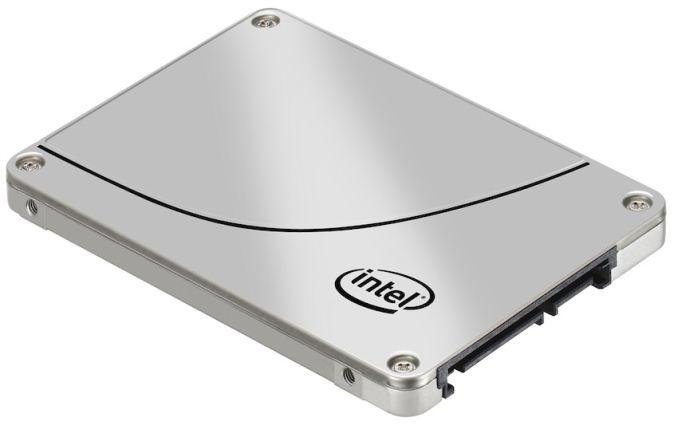Intel has silently released a new SSD for datacenters, the DC S3510. The SSD has a SATA 6Gbps controller and uses the latest IMFT 16nm 128Gbit MLC NAND. The SSD can do a whopping 880 TB written for the largest model.
The SSD will be available in 80 GB, 120 GB, 240 GB, 480 GB, 800 GB, 1.2 TB, and 1.6 TB volume sizes with a guaranteed 0.3 drive writes per day for five years which immediately is its warranty. The S3510 should be priced at roughly $0.80 per gigabyte and is considered the entry-level product within the entire range.
| Intel SSD DC S351 | ||||||||
| Capacity | 80GB | 120GB | 240GB | 480GB | 800GB | 1.2TB | 1.6TB | |
| Controller | Intel 2nd Generation SATA 6Gbps Controller | |||||||
| NAND | Micron 16nm 128Gbit Standard Endurance Technology (SET) MLC | |||||||
| Sequential Read | 375MB/s | 475MB/s | 500MB/s | 500MB/s | 500MB/s | 500MB/s | 500MB/s | |
| Sequential Write | 110MB/s | 135MB/s | 260MB/s | 440MB/s | 460MB/s | 440MB/s | 430MB/s | |
| 4KB Random Read | 68K IOPS | 68K IOPS | 68K IOPS | 68K IOPS | 67K IOPS | 67K IOPS | 65K IOPS | |
| 4KB Random Write | 8.4K IOPS | 5.3K IOPS | 10.2K IOPS | 15.1K IOPS | 15.3K IOPS | 20K IOPS | 15.2K IOPS | |
| Avg Read Power | 1.93W | 2.14W | 2.21W | 2.32W | 2.39W | 2.61W | 2.69W | |
| Avg Write Power | 1.91W | 2.14W | 3.06W | 4.45W | 4.74W | 5.24W | 5.59W | |
| Endurance | 45TB | 70TB | 140TB | 275TB | 450TB | 660TB |
880TB |
|
| S3510 | S3610 | S3710 | |
| Form Factors | 2.5" | 2.5" & 1.8" | 2.5" |
| Capacity | Up to 1.6TB | Up to 1.6TB | Up to 1.2TB |
| NAND | 16nm MLC | 20nm HET MLC | 20nm HET MLC |
| Endurance | 0.3 DWPD | 3 DWPD | 10 DWPD |
| Random Read Performance | Up to 68K IOPS | Up to 84K IOPS | Up to 85K IOPS |
| Random Write Performance | Up to 20K IOPS | Up to 28K IOPS | Up to 45K IOPS |
Intel Launches new SSD DC S3510


